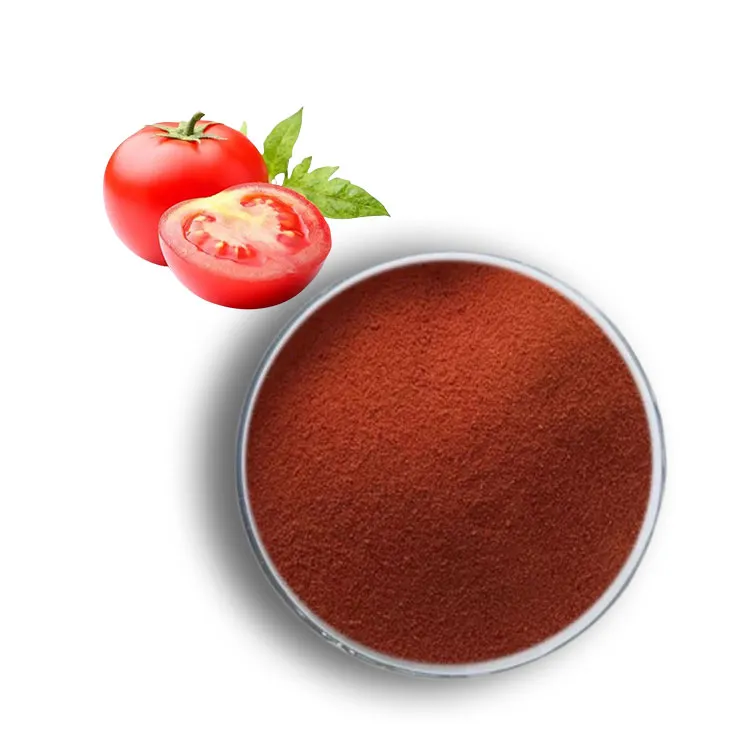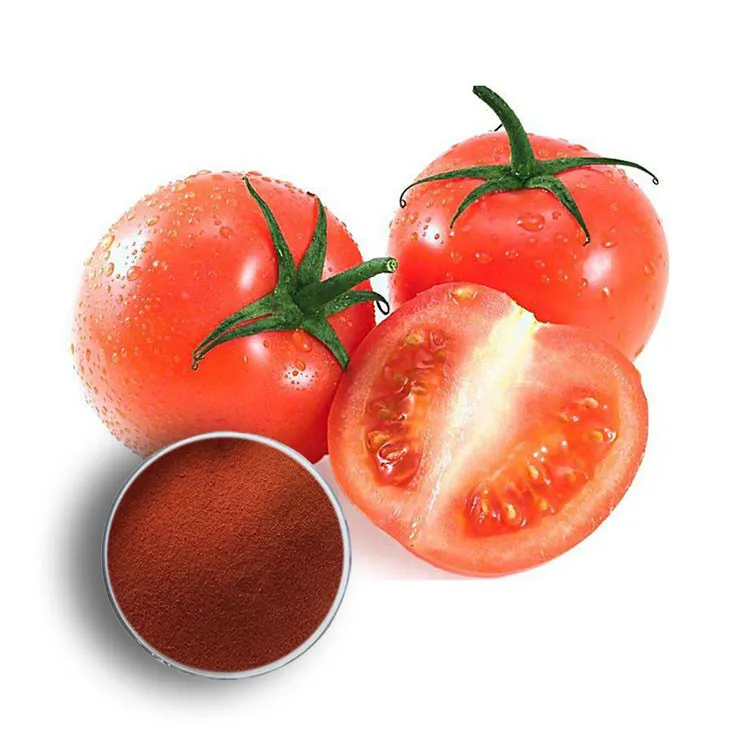- 0086-571-85302990
- sales@greenskybio.com
Recent Advances in Lycopene Research: A Review of Current Studies
2024-07-04

1. Introduction
Lycopene is a naturally occurring carotenoid pigment that has drawn significant attention in recent years due to its potential health benefits. It is a bright red pigment, and is found in a variety of fruits and vegetables. Understanding Lycopene's properties, biosynthesis, and distribution is crucial for further exploring its functions and applications in various fields.

2. Chemical Properties of Lycopene
Lycopene's Molecular Structure: Lycopene has a long chain of conjugated double bonds. Its chemical formula is C40H56. This unique structure gives it certain physical and chemical properties. The conjugated double - bond system makes lycopene a powerful antioxidant. It can donate electrons to neutralize free radicals, which are highly reactive molecules that can cause damage to cells and tissues.
Solubility and Stability: Lycopene is a lipophilic compound, which means it is soluble in lipids or fats. However, it has relatively low solubility in water. In terms of stability, lycopene is sensitive to factors such as light, heat, and oxygen. Exposure to these elements can lead to its degradation. For example, during cooking or food processing, lycopene may be partially destroyed if not properly protected.

3. Biosynthesis of Lycopene
The Biosynthetic Pathway: Lycopene biosynthesis occurs mainly in plants. It starts from the precursor molecule geranylgeranyl diphosphate (GGPP). Through a series of enzymatic reactions, GGPP is converted into phytoene, which is then desaturated and isomerized to form lycopene. The key enzymes involved in this process include phytoene synthase, phytoene desaturase, and ζ - carotene desaturase.
Regulation of Biosynthesis: The biosynthesis of lycopene is regulated by various factors. Genetic factors play an important role. Different plant species may have different genes encoding the enzymes involved in lycopene biosynthesis, which can result in variations in lycopene production. Environmental factors also influence biosynthesis. For instance, light intensity and quality can affect the expression of genes related to lycopene biosynthesis. Adequate sunlight exposure can promote the biosynthesis of lycopene in plants.

4. Distribution of Lycopene in Nature
Plant Sources: Tomatoes are the most well - known source of lycopene. In fact, they contain a relatively high amount of lycopene, especially in processed forms such as tomato paste and ketchup. Other plant sources include watermelons, pink grapefruits, and papayas. These fruits also contribute to the dietary intake of lycopene.
Occurrence in Microorganisms: Some microorganisms are also capable of producing lycopene. For example, certain strains of bacteria and fungi have been found to synthesize lycopene. This discovery has opened up new possibilities for the production of lycopene through microbial fermentation, which could be an alternative to extraction from plants.
5. Antioxidant Effects of Lycopene
Mechanism of Antioxidant Action: Lycopene acts as an antioxidant by quenching singlet oxygen and scavenging free radicals. Singlet oxygen is a highly reactive form of oxygen that can cause oxidative damage to biomolecules. Lycopene can react with singlet oxygen and convert it back to the ground state of oxygen. When it comes to free radicals, lycopene donates an electron to the free radical, thereby neutralizing it and preventing it from causing further damage to cells.
Protection Against Oxidative Stress: Oxidative stress is associated with various diseases such as cancer, cardiovascular diseases, and neurodegenerative diseases. Lycopene has been shown to protect cells from oxidative stress. In in vitro studies, lycopene has been added to cell cultures exposed to oxidative stress - inducing agents, and it has been observed that lycopene can reduce cell damage and improve cell survival. In vivo studies in animal models have also demonstrated that lycopene supplementation can decrease oxidative stress markers in tissues.
6. Anti - Inflammatory Effects of Lycopene
Modulation of Inflammatory Signaling Pathways: Lycopene can modulate inflammatory signaling pathways. It has been found to inhibit the activation of nuclear factor - kappa B (NF - κB), a key transcription factor involved in the regulation of inflammatory genes. By inhibiting NF - κB activation, lycopene can reduce the expression of pro - inflammatory cytokines such as interleukin - 1β (IL - 1β) and tumor necrosis factor - α (TNF - α).
Clinical and Pre - clinical Evidence: In pre - clinical studies using animal models of inflammation, lycopene has been shown to reduce inflammation. For example, in models of arthritis, lycopene supplementation has been associated with decreased joint swelling and pain. In clinical studies, some evidence suggests that lycopene may have anti - inflammatory effects in humans. However, more research is needed to fully understand the extent and mechanisms of these effects in the human body.
7. Other Beneficial Effects of Lycopene
Cardiovascular Health: Lycopene may play a role in maintaining cardiovascular health. It has been shown to have beneficial effects on lipid metabolism. Lycopene can reduce the levels of low - density lipoprotein (LDL) cholesterol, which is often referred to as "bad" cholesterol. Additionally, lycopene may improve endothelial function, which is important for the normal function of blood vessels.
Cancer Prevention: There is growing evidence suggesting that lycopene may have a role in cancer prevention. In vitro and in vivo studies have shown that lycopene can inhibit the growth and proliferation of cancer cells. It may act by inducing apoptosis (programmed cell death) in cancer cells, as well as by inhibiting angiogenesis (the formation of new blood vessels that supply tumors). However, more large - scale clinical trials are required to confirm its effectiveness in cancer prevention in humans.
Neuroprotection: Lycopene may also have neuroprotective effects. It has been studied in the context of neurodegenerative diseases such as Alzheimer's and Parkinson's diseases. Lycopene can protect neurons from oxidative stress and inflammation, which are two major factors contributing to the development of these diseases. Some studies have suggested that lycopene may improve cognitive function in animal models, but further research is needed to explore its potential in humans.
8. Conclusion
In conclusion, lycopene is a remarkable compound with diverse chemical properties, biosynthesis mechanisms, and distribution patterns. Recent research has revealed its antioxidant, anti - inflammatory, and other beneficial effects. However, more research is still needed to fully understand its mechanisms of action and to explore its potential applications in medicine, nutrition, and other fields. Future studies should focus on conducting more comprehensive clinical trials, exploring new sources of lycopene, and developing more effective methods for its extraction, purification, and delivery.
FAQ:
What are the main chemical properties of lycopene?
Lycopene is a carotenoid pigment. It has a long conjugated polyene chain which gives it its characteristic red color. It is a non - polar compound, making it soluble in non - polar solvents. Lycopene has a relatively high antioxidant capacity due to the presence of multiple double bonds in its structure, which can donate electrons to neutralize free radicals.
How is lycopene biosynthesized?
Lycopene biosynthesis occurs mainly in plants. It starts from the isoprenoid pathway. Molecules of geranylgeranyl pyrophosphate (GGPP) are condensed in a series of enzymatic reactions. Key enzymes such as phytoene synthase and phytoene desaturase are involved in converting GGPP to lycopene. The biosynthesis process is regulated by various factors including genetic factors and environmental conditions like light and temperature.
Where can lycopene be found in nature?
Lycopene is found mainly in fruits and vegetables. Tomatoes are one of the richest sources of lycopene. Other sources include watermelons, pink grapefruits, and apricots. It can also be found in some algae and fungi in nature. In plants, lycopene is often present in plastids, particularly in chromoplasts which are responsible for pigment storage.
What are the antioxidant effects of lycopene?
Lycopene has strong antioxidant effects. It can scavenge a variety of free radicals such as singlet oxygen, superoxide anions, and hydroxyl radicals. By donating electrons, it can prevent oxidative damage to cells and biomolecules like lipids, proteins, and DNA. This antioxidant activity is thought to play a role in reducing the risk of chronic diseases associated with oxidative stress, such as cardiovascular diseases and certain cancers.
How does lycopene exert its anti - inflammatory effects?
Lycopene can exert anti - inflammatory effects through multiple mechanisms. It can modulate the expression of inflammatory cytokines such as interleukin - 6 (IL - 6) and tumor necrosis factor - alpha (TNF - α). It also affects the activity of transcription factors involved in inflammation, like nuclear factor - kappa B (NF - κB). By reducing inflammation, lycopene may contribute to the prevention and treatment of inflammatory - related diseases, for example, arthritis.
Related literature
- Title: Lycopene and its Antioxidant and Anti - inflammatory Properties: A Review"
- Title: "The Biosynthesis and Bioavailability of Lycopene: Current Knowledge and Future Perspectives"
- Title: "Lycopene in Health and Disease: An Overview of the Current Evidence"
- ▶ Hesperidin
- ▶ Citrus Bioflavonoids
- ▶ Plant Extract
- ▶ lycopene
- ▶ Diosmin
- ▶ Grape seed extract
- ▶ Sea buckthorn Juice Powder
- ▶ Fruit Juice Powder
- ▶ Hops Extract
- ▶ Artichoke Extract
- ▶ Mushroom extract
- ▶ Astaxanthin
- ▶ Green Tea Extract
- ▶ Curcumin
- ▶ Horse Chestnut Extract
- ▶ Other Product
- ▶ Boswellia Serrata Extract
- ▶ Resveratrol
- ▶ Marigold Extract
- ▶ Grape Leaf Extract
- ▶ New Product
- ▶ Aminolevulinic acid
- ▶ Cranberry Extract
- ▶ Red Yeast Rice
- ▶ Red Wine Extract
-
Coconut Water Powder
2024-07-04
-
Citrus Aurantii Extract
2024-07-04
-
Artichoke Leaf Extract
2024-07-04
-
Yam Extract
2024-07-04
-
Hawthorn powder
2024-07-04
-
Camu Camu Extract
2024-07-04
-
Beetroot Powder
2024-07-04
-
Hops Extract
2024-07-04
-
Quercetin
2024-07-04
-
Acerola Juice Powder
2024-07-04





















